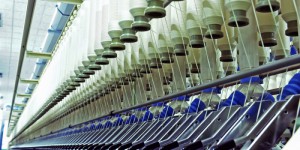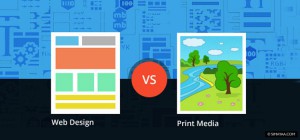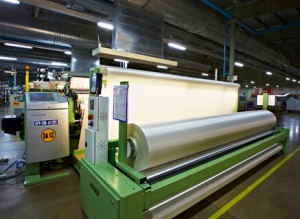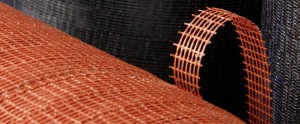The news industry has had a rough decade. Print media readership is steadily declining, newspapers are closing, and journalists with decades of experience are being laid off.
In response, major newspapers have made considerable changes. They’re attempting to combat diminishing reader interest by shortening stories, adding commentary, and most notably, using social media to their advantage.
With the meteoric rise of social media sites such as Twitter, Facebook, and Instagram, many people have claimed that we are entering a new age in which news must be delivered in 140 characters or fewer. It seems as if the golden age of Woodward and Bernstein, Edward R. Murrow, and Walter Cronkite is long gone.
This, however, is an unfair assessment. In this new age of technology, newspapers aren’t sure of how best to respond to many of the challenges they face today. By experimenting with different methods of keeping readers interested, the news industry is working tirelessly to keep journalism alive.
Combating Decline
“Thinking about the way people use the digital space [and] thinking about the way content functions in the digital space has been a challenge for the news industry because that’s not what they’re grounded in,” said Amy Mitchell, director of journalism research for the Pew Research Center in an interview with the HPR.
Because they receive the majority of their profits from ads and subscriptions, some of the most distinguished newspapers have found themselves strapped for cash. In 2013, total revenue within the newspaper industry decreased by 2.6 percent, representing over a billion dollars in lost funds. As a result, The New York Times, The Wall Street Journal, and USA Today have all experienced major losses, with each of the papers cutting anywhere from 20 to 100 newsroom jobs within the past five months. Often some of the most experienced reporters are the first to be laid off because they have the highest salaries.
Scott Bowles had been working for USA Today for 17 years when he found out that he was being laid off.
“My father who was a long time reporter and the reason I became a reporter [had] died, so I flew to Atlanta and I initiated his memorial. The layoff came two days after,” Bowles said in an interview with the HPR. “It wasn’t intentional. Its just the cold climate journalism has become. It’s the grim reality of the business.”
From 2006 to 2012, the number of working journalists in the United States decreased by 17,000, according to the Pew Research Center. This trend seems to be continuing; USA Today’s parent company, Gannet, laid off more than 200 staffers in August. Gannett has also instituted pay walls—an attempt to gain revenue by preventing Internet users from accessing content without a paid subscription. Despite these efforts, print media revenues have continued to decline.
“There was no reason given other than they had to continue to cut costs in house, Bowles said. “You pretty much knew your age and your salary were working against you.
USA Today continues to hire but who they are hiring tends to be people right out of school, people who know social media.”
Revisiting the Role of Technology
Many newspapers have also been revising content in order to target a more specific—and generally younger—audience. The prevalent assumption has been that the general population wants their news delivered in bite sized packages and given the larger lack of editorial resources, the Associated Press, Reuters, and The Wall Street Journal have all explicitly told their reporters to write shorter stories within the past year and a half.
“We were told to make stories shorter [and] pay attention to what is hot on social media,” Bowles said. “We were writing about Justin Bieber in a way we never were before. We were covering things that only kids cared about and that was now driving news.”
News organizations have repeatedly dictated that the future of journalism is bleak. They attribute this to the continual dumbing down stories in order to interest a population with an ever-shrinking attention span. But in reality, the demand for in depth reporting remains the same. The only change is that innovation is the key for newspapers to remain relevant in today’s technologically savvy world. Though different audiences may have different preferences, the demand for in depth reporting remains the same.
“People are also reading longer stories particularly with the development of the tablet. While there is a lot [of content] in mobile and social that is short there is also a place there for longer kinds of news reporting. Whether it is read on the tablet [or through] a link they share in social media, that kind of news can exist and have an audience as well,” Mitchell said.
The Washington Post
On Aug. 5, 2013, Amazon founder Jeff Bezos purchased The Washington Post, an act that shook the newspaper industry. He had no experience in journalism and many questioned his motives for acquiring one of the largest newspapers in the country. It was later revealed that Bezos was approached by the paper’s former chairman, Don Graham.
“Don, through an intermediary, approached me and said, ‘Would you be interested in buying The Washington Post?’ I was very surprised,” Bezos said in an interview on 60 Minutes. “My first question was, ‘Why would I even be a logical buyer? I don’t know anything about the news business.’ Don thought that because the newspaper business is being so disrupted by the Internet, someone who had a lot of Internet knowledge and technology knowledge could actually be helpful.”
It was clear that the traditional newspaper business model, which relied heavily upon advertisements, was no longer going to garner much revenue. Businesses are unlikely to buy print media advertisements because print media readership has been declining so rapidly. Thus, a new digital focus seems to be the only option. A contributor for Foreign Policy, Gopal Ratnam believes that Bezos’ purchase is part of a larger trend they believe potentially could save the newspaper industry.
“The individuals buying media companies is something that’s yet to show that it will be stable enough. I think people like Jeff Bezos are trying to bring that [business] perspective,” Ratnam said. “He’s trying to make The Washington Post more digital and hopefully try to get more people reading online and reading through different applications There are so many who are trying various ways in which they can attract revenue. That model still has to play out.”
Perhaps some of the most interesting changes within The Washington Post under Jeff Bezos has been the new focus on its website. His first major move as CEO was to offer free online access The Washington Post to subscribers of some local newspapers such as The Dallas Morning News, the Honolulu Star-Advertiser and the Minneapolis Star-Tribune. Furthermore, in a testament to its new dedication to digital success, The Washington Post launched a design and development office called WPNYC in order to best address some of the problems the paper had with article “viewability.”
“If you can marry that [technological vantage point] with the journalistic vantage point, that’s where the new kind of innovation and experimentation may come about and succeed,” Mitchell said.
Reporters’ reactions to Bezos’ purchase were mixed. Graham’s extreme popularity in the newsroom made many journalists wary of the changes that Bezos would bring. Several stated that they were floored by the announcement and were worried about the methods by which Bezos would run the paper.
“I think people are excited about it, but [we’ve gone through] this never-ending change,” reporter, Michelle Boorstein said in an interview with Mashable, “It hasn’t been nearly as demoralizing as other papers, but it has been uncertain.”
Looking Forward
Times are changing and newspapers must quickly realize that the methods they employed in the past may be obsolete today. Innovation in the news industry will involve changing not only the traditional journalism model, but also incorporating changes into its business, technology, and marketing sectors as well. In the upcoming decade, flexibility and a willingness to experiment with new methods, will likely be the factors that determine whether a newspaper survives or falters.
This article comes from harvardpolitics edit released
 The Print Media Technician is involved with all aspects of the printing process from the initial planning and preparation, through the print run, checking for consistent quality to cleaning up after the print run is complete. The work is usually large scale production of printed materials for a range of clients. Specifically, Print Media Technology involves the production of printed material using an offset sheet-fed press and other equipment to create finished, printed products. This occupation is responsible for producing all printed material at a printing operation.
The Print Media Technician is involved with all aspects of the printing process from the initial planning and preparation, through the print run, checking for consistent quality to cleaning up after the print run is complete. The work is usually large scale production of printed materials for a range of clients. Specifically, Print Media Technology involves the production of printed material using an offset sheet-fed press and other equipment to create finished, printed products. This occupation is responsible for producing all printed material at a printing operation.




